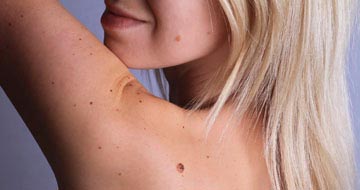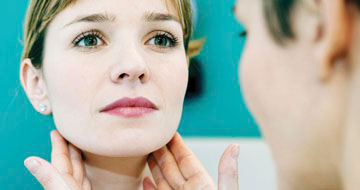
Are gel manicures and pedicures a safe option?
Summer is in full swing, and if you’re going on holiday you might have booked yourself into a nail salon for a manicure or pedicure. Many people choose gel polish over classic nail polish because of its durability and the flawless finish it delivers. Yet, some recent news stories have highlighted an increase in allergic reactions to gel nail treatments, that might make you think twice about whether to have a gel mani or pedi.
Knowing the facts can help you to make an informed choice. In this article, we’ll look at why some people react to gel polish, the issues that can arise as a result of a reaction, and how you can minimise the risk of experiencing gel nail polish allergies.
Why might you choose a gel manicure over a classic manicure?
Typically offered in nail salons, gel nail treatments involve applying a gel-based polish onto your nails. Gel polish features a special ingredient that hardens (or ‘cures’) when your nails are put under a UV or LED light. Unlike traditional nail polish, gel polish rarely cracks or chips, and the results last weeks, meaning fewer visits to the salon! With time saved and great results guaranteed, it’s not hard to see why many people choose a gel polish finish over a classic one.
Why can gel manicures trigger an allergic reaction?
The British Association of Dermatologists state that it’s the methacrylate chemicals (found in the un-cured form of gel nail polish) that typically causes an allergic reaction in some people. What’s more, if someone develops an allergy to the methacrylate, they may run into problems later on with their health. That’s because similar (or the same) methacrylates are used in some white dental fillings, diabetic glucose sensors and insulin pumps. If a person develops an allergy to the methacrylate in certain nail polishes, this might have serious impacts on their medical choices and care in the future.
Why should gel nail polish always be properly cured?
When gel nail polish is properly ‘cured’ (hardened) on the nail under a lamp, the methacrylate chemicals are less likely to make any contact with your skin. In recent years, however, scores of new nail salons have popped up to meet the demand for affordable high-street nail salons.
Some of these establishments, in their desire to keep prices low and compete with the market, might not always follow best-practice processes. Some of the reasons for potential reactions following a gel nail treatment include:
- The use of poor-quality gel polish products:
There are a number of copy-cat gel polishes that look like more premium brands, but lack the high-quality ingredients. These are cheaper to produce and might contain a higher number of irritants.
- Mixing and matching gels and lamps
What some people might not know is that each brand of gel polish is specially formulated to be used with a specific lamp. Matching gels and lamps is more than just a preference – it is crucial in ensuring the correct curing process, and allowing the right amount of time for the gel polish to harden correctly.
- Transferral of polish from the nails to the skin
Polish that hasn’t been cured properly on your nails can then be transferred onto parts of your skin that your nails regularly come into contact with (for example, your face, arms or neck). You might not immediately think that any other area of skin that becomes irritated could be linked to a gel nail polish, but it’s worth considering.
Why choose a reputable salon for a gel nail treatment?
There are many factors to consider when visiting a nail bar or salon. A skilled nail technician will know the importance of using the right gel polish formulation with the right lamp. And they’ll understand how crucial it is for the gel polish to ‘cure’ properly. They’re also more likely to use high quality gel polish products that contain fewer potential irritants.
While you might be tempted to try a DIY gel nail treatment at home to save money, it’s important to consider the pitfalls that could occur. Without the best equipment you run the risk of not curing the gel polish properly. Plus, your less dominant hand might not have the control to apply the gel polish with precision. This could increase the chances of the gel polish coming into contact with your skin (and causing a potential allergy).
Our advice? Spend time finding a salon that prides itself on its expertise and knows about the importance of following strict procedures when doing any type of gel or acrylic nail treatment. They will be able to advise you on how to look after your nails and might even offer nail polishes that don’t contain methacrylate; these won’t be as durable as gel polish, but can be cured under an LED lamp to deliver a longer-lasting finish than classic polish.
Visiting our clinic
If you encounter any skin problems or allergies after coming into contact with a product, one of our team of dermatologists can help. Please call 020 7244 4200 or make an appointment online.













